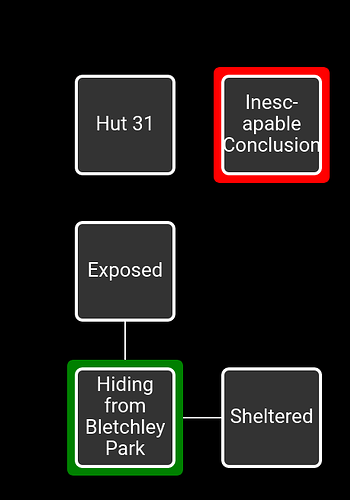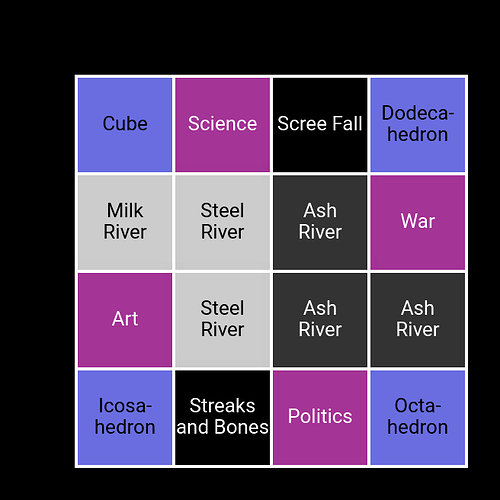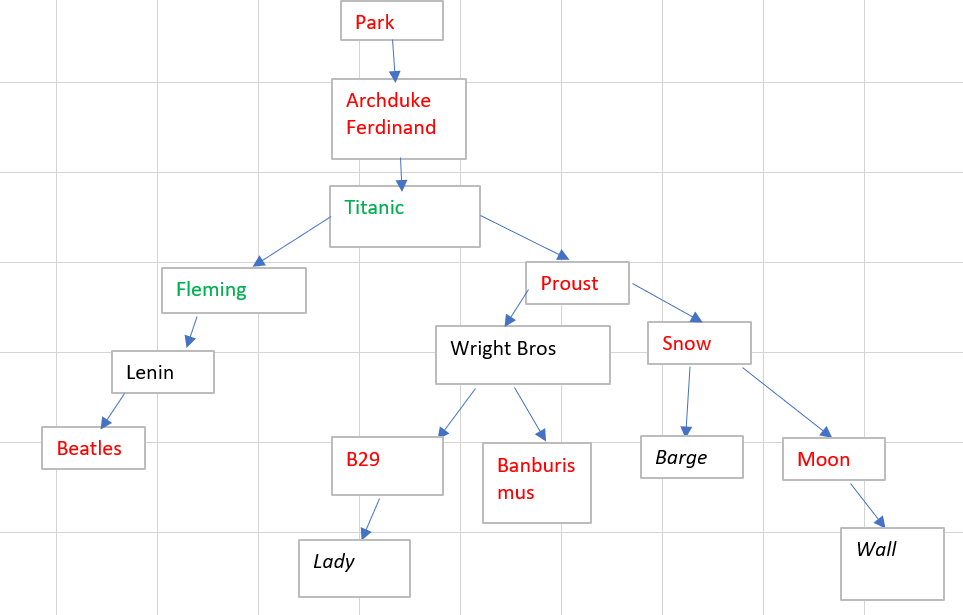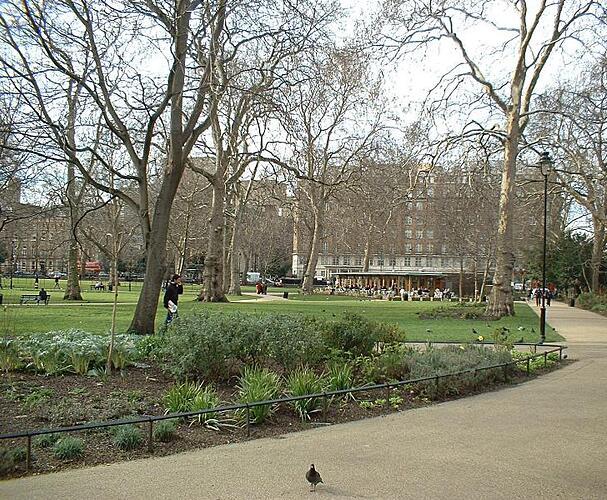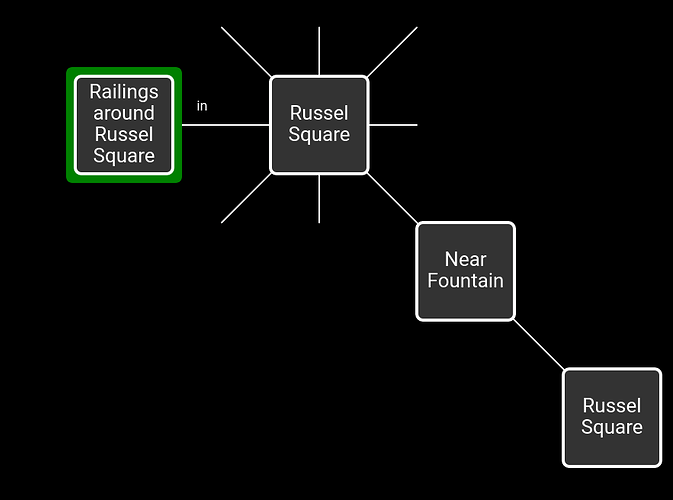That bit I did figure out - I think you can’t move on to the Bletchley Park bit unless you do
Ah, that makes it a bit less unfair. I’m still not sure if I would have figured that out without help. (Notably, jumping as a ghost still gives you the default message “You jump on the spot, fruitlessly”; that would have been a good place to hint that gravity doesn’t affect you.)
So, we’ve gotta find an animal. There’s one room in this sparse area that doesn’t seem to serve any purpose: the east part of the duck blind.
Sheltered
The hide is, indeed, sheltered from the elements, about two meters on a side and unbroken but for a slit window and the muddy climb out to the west.An old flat cloth cap hangs on a nail.
>x window
You see nothing special about the slit window.>search window
South through the slit, you see a mallard gracefully skimming the water of the lake as it lands.>sketch mallard
You sketch in a picture of the mallard.
There we go! Now the rest of the area is the same as before. Just ignore my confusion when I forgot to set the machine to “decrypt”. (Turns out it’s not symmetrical after all!)
I also discovered we can wreck history in a new way:
You shake your head, confused. Why did the mad German architect Kanziger build this monument? He must have known it would only provoke the Non-Aligned European Countries into more of their endless hostilities.
*** You have wrecked the course of history ***
Why exactly was Black helping the Nazis work toward this again?
But we can decrypt the intercept again, get imprisoned, and end up back in the Land.
Transcript:
18b.txt (17.8 KB)
Maps:
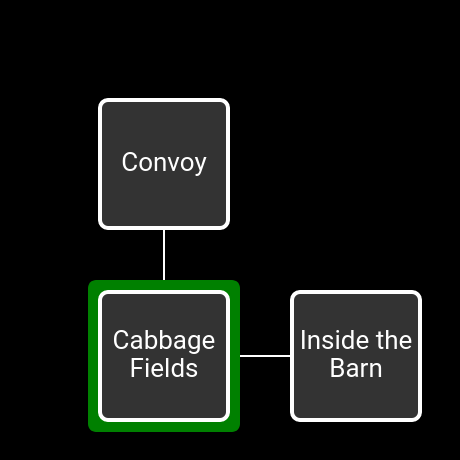
Saves:
land.sav (7.4 KB)
18.sav (7.4 KB)
d3.sav (7.1 KB)
d3_2.sav (7.3 KB)
Next up: the Land!
Oh man lots to catch up on! But just winging in with a theory: maybe in Black’s reality Stalin’s Russia kept rolling past Berlin in 1945 and turned Europe into one giant gulag (or maybe didn’t get bogged down in Finland and launched an attack on Germany before the Holocaust really got going), so based on that Black considers the Nazis the lesser of two evils? Based on the 1954 chapter, they seem pretty comfortable with balance-of-power thinking…
There are three parts of the Land we couldn’t access before: A3, D1, and D2. First, let’s check out A3.
Scree Fall
A sharp, steep mountain wall rises to the north, and scree rattles down with each gust of wind, jagged as flint.
Huh. So we don’t have a river here.
> x scree
A small avalanche of stones of every size. Sooner or later, a boulder will get you!
I’m sure we’ll be fine.
D2:
Streaks and Bones
The steep mountain wall to the south is streaked here with foul white deposits, and tiny broken bones are scattered about where you stand.
And D1:
Icosahedron
The sharp mountain walls to west and south meet here at a basalt pinnacle, on which a perfectly-cut icosahedron two yards across is balanced.
Our final Platonic solid.
So here’s our new map of the Land:
At each corner is a Platonic solid: cube, dodecahedron, octahedron, icosahedron. (The tetrahedron is missing: maybe the pyramid in the middle takes its place?) Along each wall is one of the big factors in history: science, war, politics, art.
A river flows from west to east. At the west end, it’s a “violently rapid glacier-milk river”, which flows into a canal, then opens out into “a steel-grey river” and flows under the pyramid. B2 says it flows under the “eastern corner”, while C2 says it flows under the “western corner”, so maybe it’s sort of spiralling around? On the east side, it’s “a slow, sludgy Ash River”, which likewise flows out of both the east and west corners of the pyramid, then, “sick with grey sludge”, drains into a culvert in the eastern wall.
I’m not sure about the symbolism of the river. The glacier milk at the west side is cold and pure; milk symbolizes youth and innocence. On the east side it’s choked with sludge and ash. The transition from one to the other is the pyramid, Kaldecki’s monument. Are we corrupting the timeline, perverting it from something pure and innocent into something foul and corrupted? Or is the 20th century a general loss of innocence, as the world is introduced to the concepts of global war, large-scale genocide, and climate change, among others?
The final two locations are the scree fall on the northern edge, and the streaks and bones on the southern edge. These I’m also not sure of the symbolism on. They’re clearly meant as a mirrored pair, the one at the north threatening to crush you, the one at the south…no idea.
More than anything else, the Land feels notable in its emptiness. There are no puzzles here. It’s a fascinating dreamscape of symbolism…that seems entirely optional for the rest of the game. I thought something new might appear with the landscape complete, but it seems just as empty of things that can be interacted with. So I suspect we’re missing something very important about it.
Ooh, interesting theory. That would explain both why they’re willing to work with the Nazis, and why they consider someone else a greater threat. Perhaps they just want to prolong the war to keep Russia distracted a little while longer—if they wanted the Axis powers to win, telling German high command that Enigma had been broken seems like an easier way to accomplish that.
We also know that in the previous chapter they were feeding information to both sides, so maybe they’re trying to carefully adjust the times when certain events happen, rather than actually changing the outcome of the war.
We have three choices now!
- A3: A wall covered with graffiti
- D2: A lady wearing a crinoline dress
- D4: A shipping barge in a canal
0 voters
Per comments earlier in the thread, I suspect A3 is the Berlin wall, D4 is the Suez crisis, and…I have no idea about D2. I can tell you it happens in 1912, the same year that the Titanic sank (and Wilbur Wright died). But I suspect this isn’t about Scott reaching the south pole, the end of the Qing dynasty and the Meiji period, or the invention of MDMA. My vote’s for that one, just because I have no idea what it’ll be.
When I was playing, I made a little diagram of where we gain the puzzle pieces and, therefore, the order in which the chapters can be played, which I thought may be of interest - gives an idea of the many different permutations in which you can go through the different scenes in your relationship with Black. It’s interesting that there is one branch which is entirely separate from the rest of the story, culminating in the kiss.
The red text indicates actual encounters with Black, however fleeting; green is where you read a note from him/her (there is one in the Fleming chapter which I don’t think you found), black plain text shows that there was no encounter. I’ve used black italic text for the three unplayed pieces in order to avoid spoilers
Ooh, what was the note in the Fleming chapter? I indeed did not find it.
It’s in the office on the lower floor of the lab.
Office
The small annexe where lab assistants prepare solutions, grow moulds and wash dishes used in the experiments. It is lined with bell jars and demijohns, all neatly labelled in flowing black handwriting. The laboratory lies to the south.One particular bell jar catches your eye: it’s full of spores of mould, and labelled “Penicillium”.
look under jar
It’s rather too heavy. But, moving it, you notice there is something underneath - a typed note, which you pick up.read note
Which do you mean, the typed note found under the bell-jar, the second note from Black or the folded note?typed note
“Late again, I see! I calculate you’re going to be a fortnight later than me, so when you get this note I won’t be around. Anyway, we’ve got to stop the old boy from making such a mess of discovering penicillin. Someone else is bound to make a better job of it. I’ve already contaminated his lab with mould, which ought to ruin his experiments for a while. Keep an eye on the old boy anyway, just in case. – B.”(Typed badly on St Mary’s notepaper, with a hospital typewriter.)
It’s nice to know that Black isn’t actually trying to undo the discovery of penicillin, merely to let someone else do it.
Huh! That actually makes a lot of sense; Fleming didn’t do a great job presenting this discovery and it was basically ignored for over a decade before others picked it up and brought it into the spotlight. Someone else might have put more focus and resources into it from the beginning, so that it didn’t take until the 40s to isolate enough of it to test in animals. Then we could have had antibiotics significantly earlier.
Though if Black thinks that contaminating the lab with this specific type of mold will ruin it, I wonder how penicillin was discovered in their timeline. (Or maybe they did use a different type of mold, in the hopes that Fleming would see a lab full of contaminated petri dishes and throw them all out, which is why we had to dig out the one actually-relevant sample and ensure it got noticed?)
At the time I wrote this, I had not yet played with an Enigma machine in real life: they are not as heavy as the game makes out. (They are, however, exactly as slow to operate as the game makes out.) It’s a decently accurate simulation, and won an XYZZY award for best puzzle back in the day, I think I’m right in saying. The “fly your own B-29” puzzle pleased nobody, on the other hand - the textual flight simulator was the hardest section of Jigsaw to debug, which should have been a sign that it would also be no fun to play. Under the hood, the game does indeed have to do some trigonometry, using only integer arithmetic, and it was really annoying make all the quadrants work correctly, because of Z-machine conventions on how division is signed (which, at the time, a few interpreters got wrong). And despite all that effort… I think the safe/bomb bay door puzzle is more satisfying, and that took almost no code to do.
I think what’s going on with the ghost-presence is that this is the zone corresponding to the jigsaw piece which was damaged and almost folded in half - it thus represents both where Black is (but where you shouldn’t be, and are present only as a ghost) and also where you are, but split apart. I did that for two reasons - one being to ring the changes a bit on the otherwise predictable game mechanics (find a piece, put it in the board, go there): what if something goes wrong for once? seemed an interesting question. But the more important thing was to allow the player to see the message both encrypted and decrypted, inevitably at widely separated locations. It needs to be Black, the anti-White, who performs the encryption, because the encryption is the anti-decryption (and of course vice versa). Still, I do see the criticism that Black’s exact aims are often a bit unclear.
The “he” from the Bletchley Park sentry is indeed meant to be because of the clothing, and wasn’t an accident. A woman would not have been locked in a shed, and would not have been taken for a hunter, so there would be no way to make this a unisex puzzle. So the guards see only the clothes, not the person within.
Ah, right! In the time between placing the piece and going to it I’d forgotten that this was originally a “creased edge piece”. D3 is the one from the lid of the Wright Brothers’ heater, and it was described as “creased” after the heater exploded; either they bent it in half to make the lid, or we damaged it when we blew it up. I do like that there’s an in-game explanation for why this area acts differently.
Ahh, I’m realizing now there was an indication of this in the game, which I missed due to my habit of putting on clothing as soon as I find it—here’s what happens if you leave the shelter without wearing the cap.
“All right, you! Tell me just what you are.”
> corporal, hunter
“You don’t look the part to me! The truth this time.”
So we’re trying to cover our face to look like a hunter instead of a spy. Now that I see the puzzle here, this makes a lot of sense. Whatever their gender, White’s intentionally disguising their identity to get into Bletchley Park without getting shot as a spy.
I’m afraid I must agree. The triumph of getting to the airstrip at the appropriate altitude and speed was immediately dampened by realizing all I had to do was LAND.
Per the will of the voters, we’re now headed to D2, the woman in the crinoline dress. We’ve got one animal to sketch here, but no puzzle pieces to find, since the jigsaw is now complete! And, of course, a temporal crisis to resolve.
Chapter Twelve - Christabel, My Dear
Railings around Russell Square
Russell Square, reads the plaque a few inches from your eyes, which makes this London. These railings surround a green, tree-lined square, and are themselves surrounded by genteel houses; the municipal gas-lamps are lit.A gaggle of bobbies rings the square on almost every side.
Militant suffragettes are gathered in the Square, and there’s an uneasy stand-off between the opposing forces, which seems to have lasted some time.
Ah, so we’re in the middle of the women’s suffrage movement! I say “middle”, but it had been going on since the 1870s in England, and would continue until 1928; we’re currently in 1912, so things are about to be somewhat put on hold for World War I (oops…).
I don’t know of any particular turning points in 1912, but then again my modern history knowledge is mostly focused on the United States.
The militants begin to chant something.
Oh, what are they chanting?
> listen to militants
You can’t see any such thing.> listen
You hear nothing unexpected.
Ah, so this is a bit of a cutscene.
Two sergeants confer, over in one corner of the Square.
It seems the only way to go is IN.
One of the suffragettes kicks a small pebble across the square.
Let’s see what’s happening in…
Russell Square
The grass is slightly sunken, and the bordering trees cast dense shadows, so the interior of the square is quite well-concealed from the distant policemen. A paved path runs southeast.A poster (the kind which tends to roll up) rolls about.
I think this is where we are right now:
I’m visualizing it as a small park.
Apparently oblivious to goings-on around, Black is sitting crouched over what looks alarmingly like a large petrol bomb.
“The funniest thing happened,” Black mentions. “I got caught by Russian troops, I thought I’d had it, but then I woke up in the Land with nothing worse than a headache! My time machine must have retrieved me after all.”
You smile slightly.
Fancy meeting you here!
For the Americans, a petrol bomb is what we’d call a molotov cocktail.
> x bomb
In a few years’ time, it would be called a Molotov cocktail. For now, “dirty great petrol bomb” will have to do.
Oh, or for Brits too, it looks like. It’s just that the Soviets haven’t bombed Finland yet, so these makeshift weapons haven’t gotten named after Molotov yet. That makes sense.
And I’m sure Black has got great intentions with it.
> black, it was me
“Shhh,” says Black with easy friendship, “I’m busy winning women the vote.”
Actually yeah, I can’t fault those intentions. Though I suspect a molotov may not have quite the result they expect.
As a side note, the descriptions of Black have been changing as we progress through the plot.
> x black
To look on is the usual mixture of irritation and desire.> hug black
It becomes quite a languorous one, too, but Black pushes you away to get back to the pressing business of the hour.Black consults a pocket-watch, pensively.
Hopefully we’re not about to ruin this newfound cameraderie.
> se
Near Fountain
The water to the fountain appears to have been turned off, but a cherub still gasps upward at the night sky. The square-crossing path runs southeast and northwest.A crumpled-up newspaper half hangs out of the fountain.
A nightingale flutters dimly by in the dark sky.
[Your score has just gone up by one point.]
> sketch nightingale
At this distance, in this light?
Hm. Maybe we’ll need to lure it closer. I tried dropping the corn bread, but no dice. What do nightingales eat? Bugs?
As a side note, the “-gale” part of the name comes from an Old English word for “sing”, because their singing is prominent at night. Mythologically, the first nightingale was originally a woman named Philomela (meaning “lover of fruit” but one letter off from meaning “lover of song”); after various horrifying things happened to her (details vary between sources), her tongue was cut out to keep her from exposing the perpetrators. But she found a way to get the information out, possibly by weaving it into a tapestry, and then the gods turned her into a nightingale to protect her from the king’s revenge.
Supposedly, this explains why male nightingales sing but females are mute; I’m not sure if this is biologically true or not, and later poets tend to talk about Philomela herself singing. There’s a very beautiful duet from Hector Berlioz’s Beatrice and Benedick that has the line Philomèle qui mêle aux murmures du bois les splendeurs de sa voix: Philomela, who mixes the splendor of her voice to the whispering of the woods. In the IF scene, https://philome.la used to be the standard place to host Twine games, until it shut down in 2019.
…anyway. Tangent over.
What does this newspaper have to say?
Saturday 13th April, 1912, and still full of the big story of the week: the sinking of the Titanic. (The details are all wrong, though.)
Ha! We should correct them on that.
The path continues southeast:
Russell Square
The far end of the Square, which is especially shady owing to the irregular placing of the gas-lamps; a paved path runs northwest.On the other side of the railings, a lone policeman stands guard with his back to you, whistling off-key.
This is a terrible idea, but I want to see what happens if we…
> attack policeman
The bobby whirls around, startled, and peers through the railings to see you. “Cripes,” he exclaims, and strides back at a fair lick to the circle of policemen around the Square.
The answer is nothing seems to happen in the next several turns, except the policeman disappearing. Restoring back in case he’s important.
Some more experimentation does allow us to sketch the nightingale:
> put corn bread on fountain
The nightingale swoops down to the bowl, landing perfectly, and voraciously consumes the lump of corn bread.> sketch nightingale
You sketch in a picture of the nightingale.
Success! Now let’s get out of here. I’m sure Black has things figured out.
You shake your head, confused. Why is this party happening? Don’t they know there’s a war on? Still: before the next raid, just time to toast the new millennium with rationed lime juice.
*** You have wrecked the course of history ***
Uh oh! Seems like we do need to stop them after all.
Well, what can we do with this policeman, apart from attacking him?
> x policeman
Moonlight gleams from his silver epaulettes, and the pair of handcuffs hanging loosely from his back pocket.
Well that seems like a solid clue.
> get handcuffs
You attempt to pick the bobby’s back pocket. After a moment he half-turns, scratching his backside as if he has an itch. You are forced to concede that it won’t be so easy.
Drat.
So I suspect we’re going to need to get these handcuffs, then handcuff Black, preventing them from throwing their bomb. The question is, how to do that?
OK, I’m declaring thread bankruptcy – was too busy to comment for a while, so rather than wait until I have time to do a giant mega post covering one and a half jigsaw pieces, I’m just closing my eyes to what’s come before and moving forward.
[Well, that’s a lie, one note on the plane sequence – I think the critiques are valid, but part of the issue I think is that the complicated bit comes early in the puzzle (figure out how the radio beacon works, steer the plane, optimize the landing approach) so then LAND feels like a deflating shortcut. Probably a more satisfying design would have made the earlier steps a bit simpler, and the final ones a bit more complex, to put the climax and sense of accomplishment at the appropriate place].
Yay, I voted for this!
Hrm, no idea on the reference here – Coleridge’s Christabel, maybe? I only dimly know what that’s about (since it was left unfinished, maybe he was in the same boat).
Hey cool, I’ve been here! My wife did a semester abroad at University College London, and Russel Square is right in the middle of the campus; when we visited London she wanted to revisit it for nostalgia purposes. The game frames it pretty well, and I think your sense of it is correct.
As a point of trivia, the square is directly next to/under the looming UCL Senate House, which was Orwell’s model for the Ministry of Truth building in 1984 – though of course we’re 20ish years before it’ll be built:
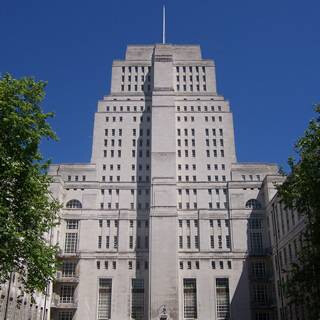
You know, from the opening sequence in Sarajevo, I’d initially thought Black was a starry-eyed idealist who was repulsed by violence, but the game has effectively shown that not to be the case. Actually, apropos of the speculation above about why Black is so blase about helping the Nazis, that first sequence is of a piece with the theory that in their timeline, the Soviets steamrolled a weaker Germany – maybe Black was trying to avert WWI not to save lives as such, but to prevent Germany’s post-Versailles demilitarization.
“More democracy through terrorism” is a syllogism that’s appealing but rarely effective, it’s true.
(…maaaaaybe you can make a case for Northern Ireland? I don’t know enough about the Troubles to say).
Ah, that makes sense – I knew the myth but that part of it always confused me, since of course I think of nightingales as songbirds!
I actually quite like the implication that women being able to vote is a major bulwark against the world getting too messed up (certainly true in the US!)
Well, we could always try TELL BOBBY ABOUT PETROL BOMB, but that seems a bit extreme. Perhaps we could distract him by giving him the newspaper instead? The lurid details of the Titanic sinking are probably pretty riveting.
(Also, can we interact with that poster that rolled about, or was that just scene dressing?)
“More democracy through terrorism” is a syllogism that’s appealing but rarely effective, it’s true.
I think a case can be made that the vote for women was won through terrorism, and that the more peaceful protests and campaigning were successful only because the powers that be believed the alternative was violence.
Clearly we need to divide citizens up into ‘peaceful’ and ‘violent’ groups on a simple random basis and assign them opposite agendas and see which one is selected to better measure the efficacy of the two methods.
Better yet, we can make it a double-blind trial, where the experimenters also don’t know which group is using violence and which isn’t!
Unfortunately, any direct interaction with him gets the same reaction:
The bobby whirls around, startled, and peers through the railings to see you. “Cripes,” he exclaims, and strides back at a fair lick to the circle of policemen around the Square.
This applies to showing, giving, and telling, as well as attacking.
I completely forgot about that! We can indeed get it:
An advertising poster which complacent men never give a second glance, this one’s by the W.S.P.U. and depicts “What A Man Can Be And Still Have The Vote” (a drunkard, an idler, a criminal and so on), contrasted with “What A Woman Can Be And Yet Not Have The Vote” (a scholar, a doctor, a mother and so on). The men look shifty and ugly, the women are saints.
That would be the Women’s Social and Political Union, one of the more militant suffragist groups. This might just be flavor, or it might be the key to the puzzle!
Notably, sketching the nightingale required an object from a different vignette (the corn bread from the Wright Brothers); I wonder if that’s a hint that we’ll need to use some of the many, many objects we’ve acquired in our travels here, or if there’s some food lying around in the park that you can use instead.
You are carrying:
a poster
a crumpled newspaper
wheels III and I
a cloth cap (being worn)
a sparkler (providing light)
a canvas rucksack (which is open)
a spent cartridge
a RZ-ROV gadget
a beige folder
a Geiger counter
Rukl's "Atlas of the Moon"
a British Army officer's uniform
a wooden broom
a cargo capsule (which is empty)
a gnomon
Waldo
a mandolin
a box of mosquito powder
a Sixth Officer's jacket
Place Names of Carolina
a green cap
a Richard's anemometer
a paper dart
a madeleine cake
Black's Kaldecki detector
a second note from Black
a first aid box (which is closed)
the 1911 Boy's Book of the Sea
a curious device
the Victorian ormolu clock
Emily's sketch book
a charcoal pencil
three keys:
a little key
a elegant key
a tagged key
two newspapers:
an historic edition of Pravda
Le Figaro
an intercept
a travel permit
a checklist
a chit signed by Lenin
a handwritten invitation card
a White Star Line scribbled-on towel
a folded note
a white party ticket
As we mess around here, Black is hard at work on the bomb:
Black gives the petrol an amateurish slosh.
Black hefts the petrol-bomb, trying to gauge its weight.
Black checks the rag nervously.
Black consults a modern-style British Museum guidebook.
But some of these messages have repeated, so hopefully they’re random and not a sort of countdown. If we’ve wasted too much time, we’ve got a save at the start of this area to restore back to.
> search black
You find nothing of interest.
They really are quite cooperative here!
There’s a sudden, horrible pause.
Uh oh. Hopefully this is also just a random message.
I tried throwing some things, to see if that would distract the bobby, but it just acts the same as dropping (the default handling of THROW in Inform). He’s also got some nice random messages, though:
The bobby runs out of tune, and begins whistling another.
Lots of cool random ambience in this scene. I tried accompanying him on the mandolin, but he doesn’t notice, which is probably for the best. I also tried “get bomb”, but “that seems to belong to Black”: we’re very polite here.
I’ve run out of ideas for now. Any suggestions?
19b.txt (11.1 KB)
This really makes me wonder what about our appearance is making him yell “Cripes!” (I assume this reaction holds even after we change out of our weird hunter getup, but figured I’d raise the possibility)
Interesting! I assume giving or showing it to the policeman or Black doesn’t do anything.
…that long list of stuff sure doesn’t spark any ideas. Did we ever figure out what the strange device does?
Oh, that’s interesting - Black would have had to bring that back on purpose, so maybe the plan involves the British Museum somehow? It’s also right next to Russell Square. Now that we’ve met Black, do any of the exits open up? The Museum should be to the E or NE I think.
I’m also kinda drawing a blank. Anything else we can do with the fountain, maybe?
It tells us which year we’re in, and lets us turn the cloud of displaced air into a black ball to get back to the Land. So that one at least is useful! (That’s how I knew we’re in 1912 before finding the newspaper.)
None that I’ve found…but is Black about to molotov the British Museum?
In the words of Jason Mendoza from The Good Place: “I’m telling you, molotov cocktails work. Anytime I had a problem and I threw a molotov cocktail, BOOM! Right away, I had a different problem.”
It’s a supporter, but we can’t enter it; examining it tells us it’s dry.
